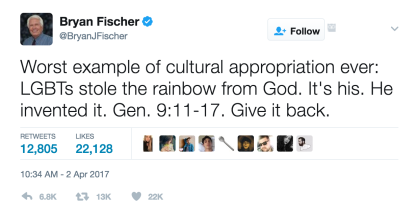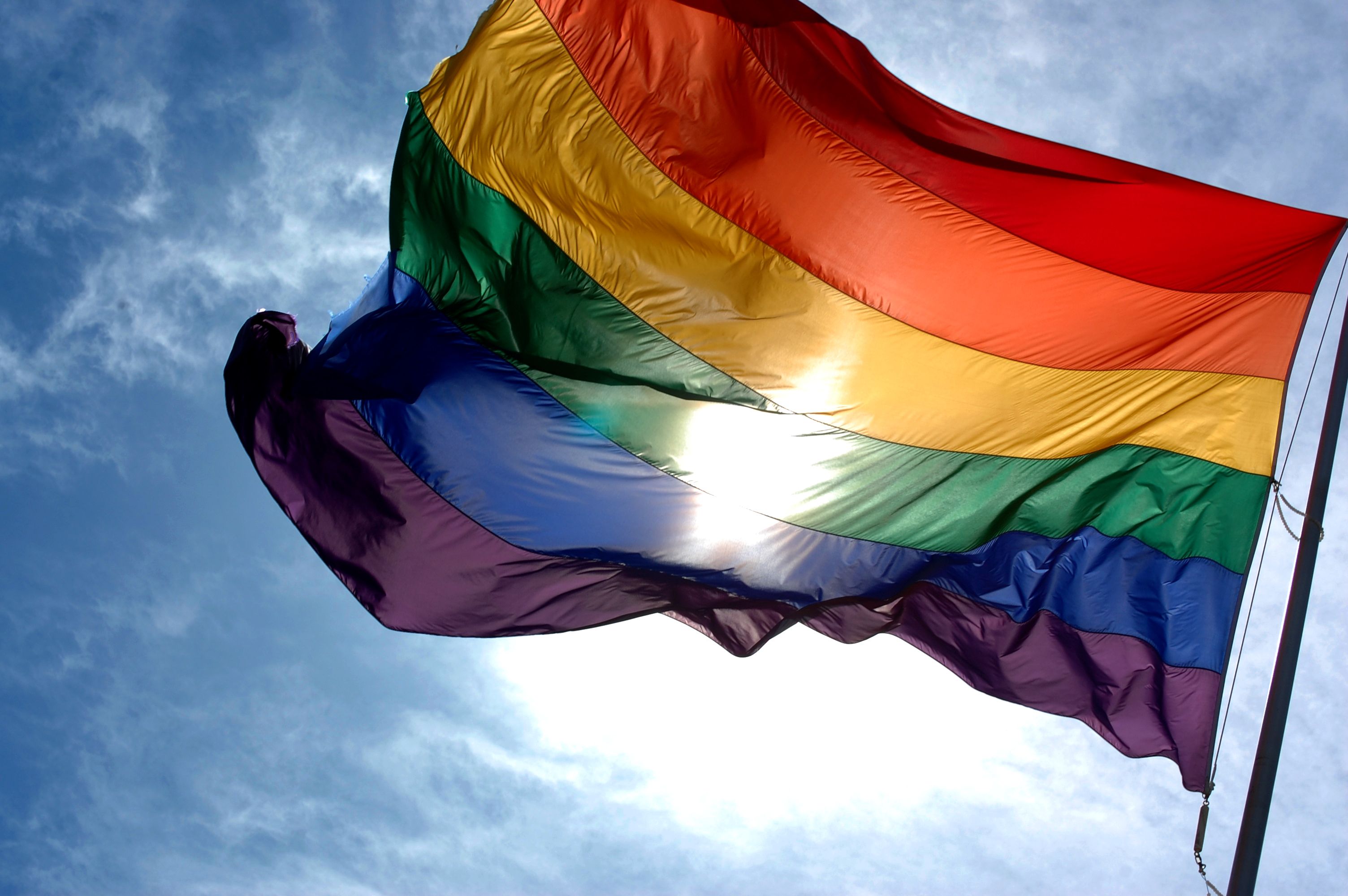
On March 31, Gilbert Baker, a gay activist and creator of the rainbow flag, died at age 65.
On April 2, Bryan Fischer, host of American Family Radio’s Focal Point and anti-gay and anti-Muslim activist, tweeted that the LGBTQ community stole the rainbow from God and accused them of cultural appropriation.
There is so much meaning behind the rainbow flag, its creation and why it is not “stolen.”
The Rainbow Flag
In the 1970s the gay-pride movement was spreading across San Francisco and New York. Baker was asked by friends to create a new symbol to represent the gay community due to his creativity and talent for making banners. Most of the designs at the time included a pink triangle which was used as a label for gay men by the Nazi’s during World War II. He believed they needed a fresh, new design that did not hold this dark history.

In June of 1978, Baker, with the assistance of volunteers, created the first rainbow flag by filling trash cans of dye, washing them in public washing machines and sewing them together. It was first unveiled on June 25, 1978 for the San Francisco Gay Freedom Day Parade. Since then, the flag has been a symbol of equality, peace and love all over the world.
“We needed something beautiful, something from us. The rainbow is so perfect because it really fits our diversity in terms of race, gender, ages, all of those things. Plus, it’s a natural flag—it’s from the sky,” Baker said during an interview at the Museum of Modern Art in 2015.
The first flag had eight colors, each representing a different meaning. Pink for sexuality, red for life, orange for healing, yellow for sunlight, green for nature, turquoise for magic, indigo for serenity and violet represented spirit. Over time it was changed to six colors, taking out pink and turquoise, but the meanings of each color still holds strong.
Cultural appropriation
To me, cultural appropriation means taking a tradition or symbol that is associated with another culture and using it without understanding the cultural significance or meaning. However, the rainbow is not a symbol for Christianity and was given to all living creatures.
 The Bible verse that Fischer is referring to is Genesis 9:11-17. God created the great flood and promised Noah that He would not do it again by creating a rainbow. The rainbow symbolizes His promise between Him and all living creatures. According to the Bible, God did create the rainbow but the rainbow is not a symbol of Christianity and the LGBTQ community did not choose the rainbow out of disrespect. It seems as if Fischer is taking the Bible out of context to fit his own anti-gay agenda. It gives him another reason to be angry with people who are not hurting him in any way but that he chooses to be angry with.
The Bible verse that Fischer is referring to is Genesis 9:11-17. God created the great flood and promised Noah that He would not do it again by creating a rainbow. The rainbow symbolizes His promise between Him and all living creatures. According to the Bible, God did create the rainbow but the rainbow is not a symbol of Christianity and the LGBTQ community did not choose the rainbow out of disrespect. It seems as if Fischer is taking the Bible out of context to fit his own anti-gay agenda. It gives him another reason to be angry with people who are not hurting him in any way but that he chooses to be angry with.
God created the rainbow for all human beings. The verse did not say He is only giving the rainbow to some people. Just like the sky, water, flowers and trees belong to everyone. This is not the only way the rainbow is used. Skittles‘ slogan is “taste the rainbow.” Should they have to give it back too? Maybe Fischer should speak to the candy company about cultural appropriation.
Baker took the beauty of the rainbow, added his own deep meaning to it and gave it to everyone to enjoy. He refused to apply for a trademark for his creation. “It was his gift to the world,” Cleve Jones, a friend of Baker, said.
This just showed that there is something wrong with the world we live in. Someone who is suppose to be representing Christianity, morals and God is spreading hate while someone who is hated by some for being different is spreading the message of love and equality.



